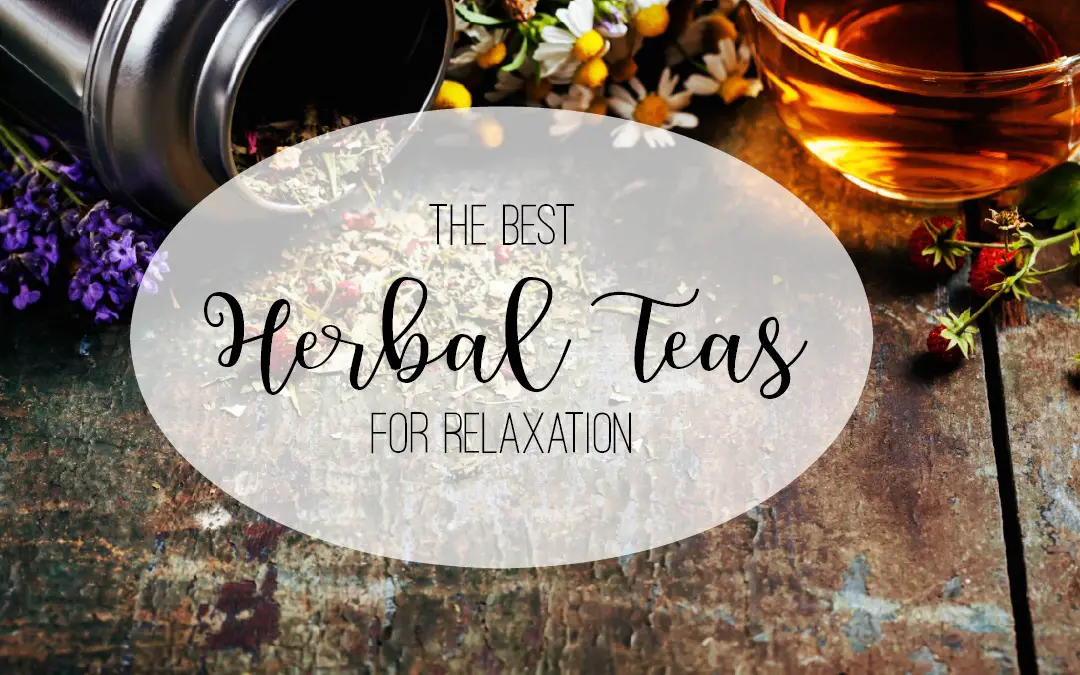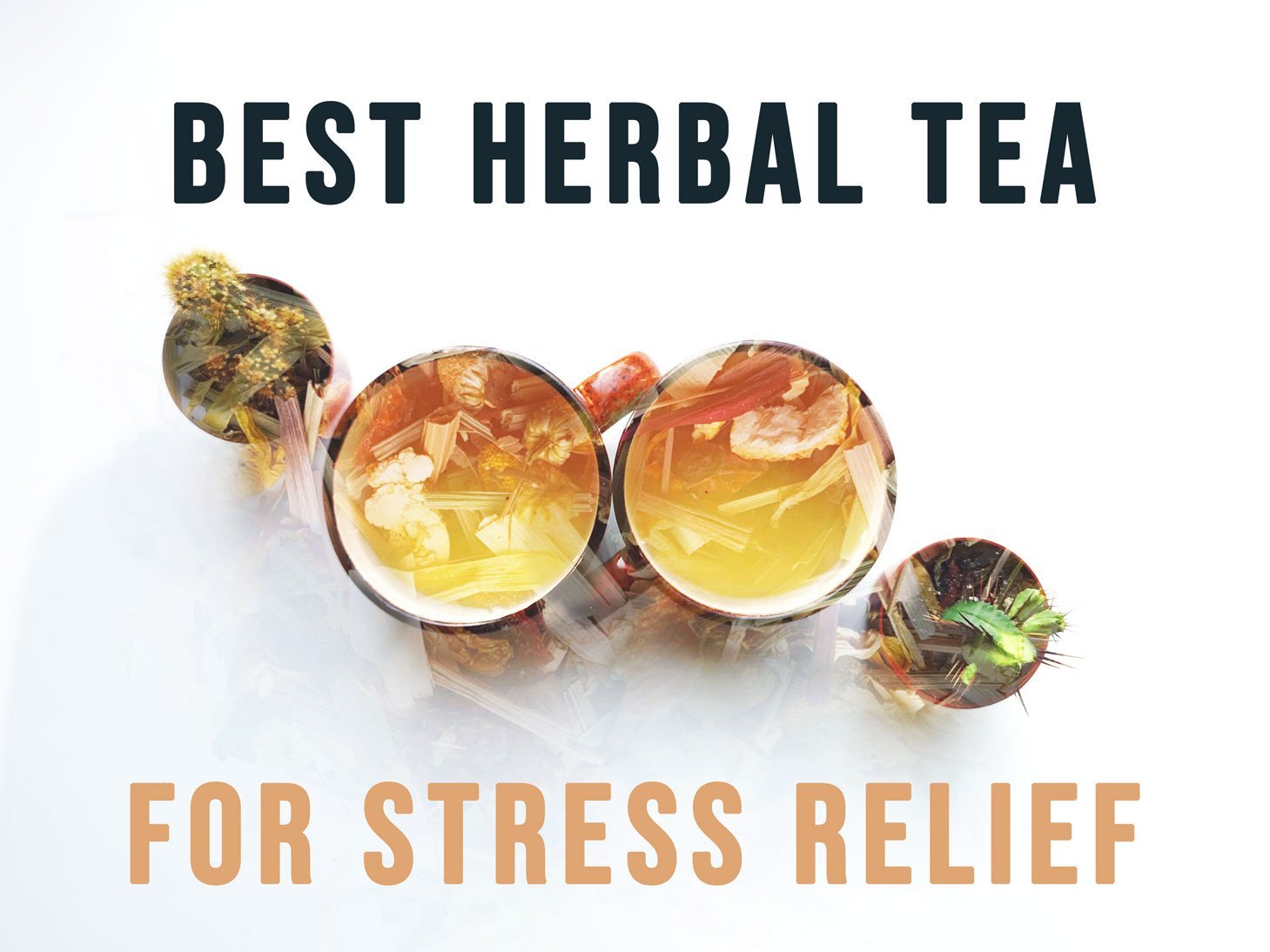Preparation and Consumption of Relaxing Herbal Teas: Best Herbal Teas For Promoting Relaxation And Stress Relief

Brewing herbal tea correctly is crucial for unlocking its full potential for relaxation. The temperature of the water, the steeping time, and even the type of container you use can all affect the final flavor and the release of beneficial compounds. Paying attention to these details will significantly enhance your tea-drinking experience and its calming effects.
Proper preparation ensures that the delicate compounds responsible for the relaxing properties of herbal teas are effectively extracted. Using the correct water temperature prevents scorching the herbs, which can lead to a bitter taste and the destruction of beneficial components. Similarly, steeping for the appropriate length of time allows for optimal extraction without over-steeping, which can result in a harsh, astringent brew.
Ideal Brewing Process for Chamomile Tea
This infographic details the steps for brewing chamomile tea, known for its calming and sleep-promoting properties.
Best herbal teas for promoting relaxation and stress relief – Step 1: Water Heating
Heat filtered water to approximately 200°F (93°C). Using filtered water minimizes the presence of minerals that can affect the taste and aroma of the tea. Boiling water is too hot for chamomile and can make it bitter. A thermometer is recommended for accurate temperature control.
Step 2: Tea Preparation
Place one to two chamomile tea bags (or one to two teaspoons of loose leaf chamomile) in a mug or teapot. Using a tea infuser for loose leaf tea is recommended to avoid sediment in your cup.
Step 3: Steeping
Pour the heated water over the chamomile. Gently swirl the mug or teapot to ensure the tea bags or loose leaves are fully submerged. Allow the tea to steep for 5-7 minutes. Steeping for longer may result in a more bitter taste.
Step 4: Serving
Remove the tea bags or infuser. If using loose leaf tea, carefully strain the tea before serving. Enjoy your soothing cup of chamomile tea. You can add a touch of honey or lemon if desired, but this is optional.
Optimal Consumption Time for Relaxing Herbal Teas, Best herbal teas for promoting relaxation and stress relief
The best time to drink relaxing herbal teas depends on their intended effect. For promoting relaxation before bed, consuming chamomile or lavender tea 30-60 minutes before bedtime is generally recommended. This allows the calming effects to take hold before sleep. For stress relief during the day, a mid-afternoon cup of calming tea, such as lemon balm or rose tea, can provide a gentle boost of relaxation without interfering with sleep. Avoid drinking these teas too close to bedtime if you’re sensitive to their effects and have difficulty falling asleep. It’s important to note that individual responses vary. Experiment to find the timing that works best for you.
Combining Herbal Teas for Synergistic Effects

Blending different herbal teas can create a more potent and nuanced relaxation experience than using a single variety. This synergistic effect arises from the combined actions of various plant compounds, potentially leading to enhanced stress reduction and improved sleep quality. However, it’s crucial to understand potential interactions before combining teas.
Combining teas allows for a more tailored approach to relaxation, addressing specific needs. For example, a blend might combine calming chamomile with uplifting lavender to achieve a balanced, soothing effect. Careful consideration of individual herbs and their properties is key to creating a harmonious and beneficial blend.
Potential Herbal Tea Combinations and Their Rationale
Several herbal tea combinations have shown promise in enhancing relaxation. These combinations leverage the unique properties of each herb to create a synergistic effect greater than the sum of its parts.
- Chamomile and Lavender: Chamomile is known for its calming and sleep-promoting properties, while lavender offers a gentle uplifting and relaxing effect. Combining them creates a balanced blend that soothes anxiety and promotes restful sleep. The mild sedative effects of both herbs complement each other, offering a more profound relaxation experience.
- Lemon Balm and Passionflower: Lemon balm possesses mood-boosting and stress-reducing properties, while passionflower is a traditional nervine that helps to calm the nervous system. This combination can be particularly effective for individuals experiencing anxiety and nervous tension, offering both a calming and uplifting effect.
- Rosehips and Hibiscus: While not strictly sedatives, rosehips are rich in Vitamin C, which helps combat stress-induced fatigue, and hibiscus offers a subtly tart and refreshing taste. This combination provides a gentle, uplifting experience that can complement other relaxing teas. The vitamin C content can also support the body’s natural stress response.
Potential Interactions with Medications and Supplements
While generally safe, some herbal teas can interact with certain medications or supplements. It’s crucial to consult with a healthcare professional before combining herbal teas if you are taking any prescription or over-the-counter medications, particularly blood thinners, antidepressants, or sedatives. Some herbal teas, such as chamomile, can interact with anticoagulants, potentially increasing the risk of bleeding. Similarly, certain herbs may interact with antidepressants or sedatives, potentially leading to excessive drowsiness or other adverse effects. Always err on the side of caution and seek professional guidance when necessary.
Complementary Ingredients to Enhance Taste and Benefits
Adding complementary ingredients can enhance both the taste and potential benefits of relaxing herbal teas.
- Honey: A natural sweetener that also possesses soothing properties for the throat and can contribute to a sense of calm.
- Lemon: Adds a refreshing citrusy flavor and is a good source of Vitamin C, which can help support the immune system and reduce stress-related fatigue.
- Ginger: Can add a warming spice and may help alleviate digestive discomfort, which can sometimes be associated with stress.
- Cinnamon: Offers a warm, comforting flavor and is associated with various health benefits, including potential anti-inflammatory properties.
Addressing Individual Needs and Considerations

Choosing the right herbal tea for relaxation is a deeply personal journey, influenced by individual tastes and health circumstances. What works wonders for one person might not be suitable for another. Understanding these individual variations is crucial for maximizing the benefits and minimizing any potential risks associated with herbal tea consumption. This section explores how to personalize your relaxation tea routine safely and effectively.
It’s essential to remember that while herbal teas are generally considered safe, they can interact with medications or exacerbate certain health conditions. Therefore, personalized choices should always be made with careful consideration and, when necessary, in consultation with a healthcare professional. Ignoring potential interactions or contraindications can have unintended consequences.
Individual Preferences and Health Conditions
The wide variety of herbal teas available offers something for everyone. However, individual preferences in taste and aroma play a significant role. Some people prefer the subtly sweet notes of chamomile, while others might find the earthy tones of rooibos more appealing. Likewise, the texture and strength of the brew can influence enjoyment. Experimenting with different teas is encouraged to discover your personal favorites. Beyond taste, certain health conditions necessitate careful tea selection. For example, individuals with caffeine sensitivity should avoid teas containing even small amounts of caffeine, opting instead for decaffeinated varieties or caffeine-free herbs like chamomile or lemon balm. Pregnant or breastfeeding women should exercise extra caution and consult their healthcare provider before incorporating any new herbal teas into their diet, as some herbs may not be safe during these periods. Individuals with known allergies must also carefully check the ingredients of any herbal tea to avoid potential allergic reactions.
Importance of Consulting a Healthcare Professional
Before using herbal teas for medicinal purposes, such as managing stress or anxiety, it’s vital to seek advice from a healthcare professional, especially if you are taking other medications or have pre-existing health conditions. Many herbs have potent pharmacological properties and can interact negatively with certain drugs. For instance, some herbal teas can increase or decrease the effectiveness of blood thinners or other medications, potentially leading to adverse health effects. A doctor or qualified herbalist can provide personalized guidance on safe and effective usage, considering your individual medical history and current medications. This proactive approach ensures the safe and beneficial incorporation of herbal teas into your wellness routine.
Incorporating Relaxing Herbal Teas into a Holistic Wellness Routine
Relaxing herbal teas can be seamlessly integrated into a holistic wellness plan, complementing other stress-reducing practices. A simple yet effective approach is to incorporate a warm cup of your chosen tea into your evening wind-down routine. This could involve enjoying a cup of chamomile tea while reading a book or taking a relaxing bath. For a more structured approach, consider incorporating a daily tea ritual into your schedule. This could involve setting aside 15-20 minutes each evening to prepare and savor a cup of your favorite relaxing tea in a quiet and peaceful setting. Pairing your tea with mindful breathing exercises or meditation can further enhance its calming effects. Finally, remember that consistency is key. Regularly incorporating relaxing herbal teas into your routine can contribute to a more balanced and stress-free lifestyle over time.